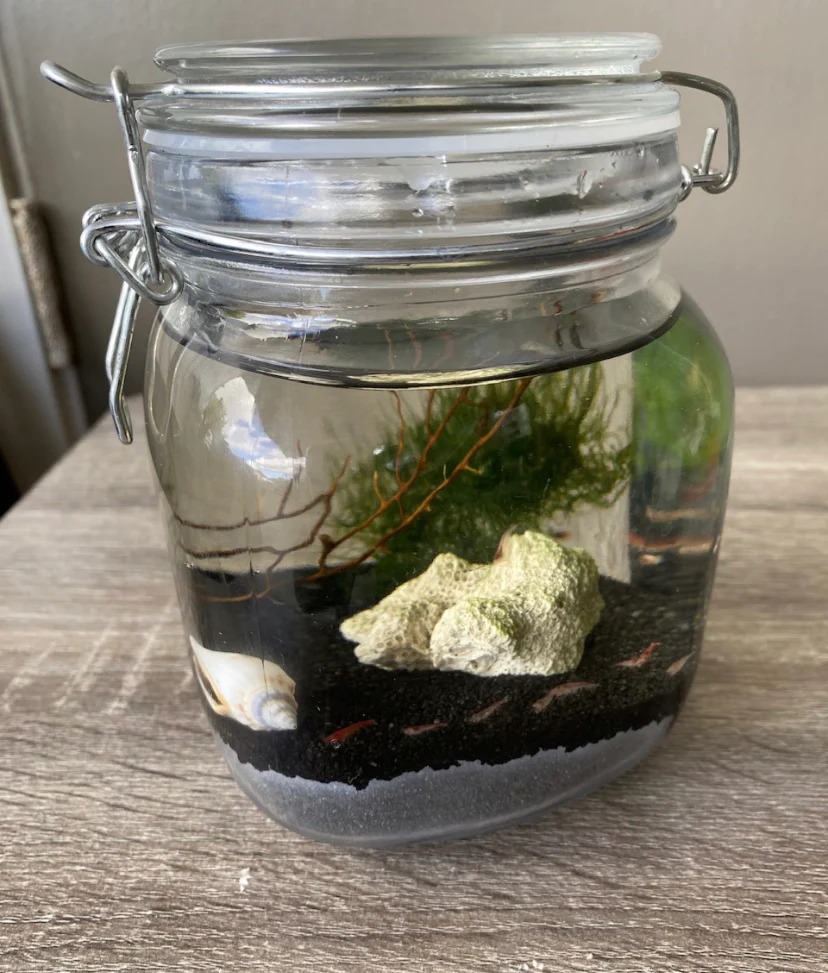Introduction
A Self Sustainable Ecosystem offers a rare glimpse into the delicate balance of life. Encased in a glass jar, this miniature ecosystem houses plants, microorganisms, and Opae Ula shrimp that coexist and thrive without human interference. A Self sustainable ecosystem s more than a decorative piece—it’s a living laboratory that demonstrates how nature maintains itself. Observing this tiny world provides insight, relaxation, and a deeper appreciation for ecological harmony.
The Concept of a Self Sustainable Ecosystem
A Self Sustainable Ecosystem functions as a closed-loop system. Plants and algae use light to produce oxygen and energy through photosynthesis. Shrimp feed on algae and other organic matter, producing waste that decomposers convert into nutrients for the plants. This continuous cycle ensures the Self Sustainable Ecosystem maintains balance and thrives without feeding, cleaning, or filtration.
Why a Self Sustainable Ecosystem Captivates Observers
The Self Sustainable Ecosystem is captivating because it replicates the natural world in miniature. Watching shrimp move gracefully, plants sway, and microorganisms recycle nutrients gives a sense of life’s interconnectivity. Each component of the Self Sustainable Ecosystem contributes to its health, illustrating how ecosystems in nature depend on every organism to maintain stability.
The Role of Opae Ula Shrimp in a Self Sustainable Ecosystem
Opae Ula shrimp are the cornerstone of a Self Sustainable Ecosystem. These small, hardy creatures feed on algae, preventing overgrowth, and produce waste that nourishes plants. Their presence maintains the ecosystem’s delicate balance. In a Self Sustainable Ecosystem, shrimp activity provides movement and life, making the miniature world dynamic, educational, and visually engaging.
Educational Insights from a Self Sustainable Ecosystem
A Self Sustainable Ecosystem is an invaluable educational tool. It allows students and enthusiasts to observe real ecological processes in action. Concepts such as photosynthesis, nutrient cycling, and the interdependence of organisms are clearly demonstrated in a Self Sustainable Ecosystem. This hands-on observation fosters curiosity and teaches the importance of sustainability and conservation.
Benefits of Observing a Self Sustainable Ecosystem
Owning a Self Sustainable Ecosystem offers mental and emotional benefits. It encourages relaxation and mindfulness as you watch life unfold naturally. The system’s independence reduces stress associated with traditional pet care, allowing people to enjoy the beauty and rhythm of nature. A Self Sustainable Ecosystem also enhances interior spaces, providing a calming, educational, and visually appealing focal point.
Creating Your Own Self Sustainable Ecosystem
Building a Self Sustainable Ecosystem is simple and rewarding. Start with a clear glass jar, add substrate, live aquatic plants, dechlorinated water, and a few Opae Ula shrimp. Place the jar in indirect sunlight, and over time, the ecosystem will establish itself. The shrimp feed naturally, plants grow, and microorganisms recycle waste, creating a fully functional Self Sustainable Ecosystem that can last for years.
Sustainability and Longevity
A properly set up Self Sustainable Ecosystem is designed for longevity. Opae Ula shrimp are resilient and can live for decades. The ecosystem’s balance ensures that oxygen levels, nutrient cycling, and water clarity remain stable. This makes a Self Sustainable Ecosystem an enduring example of how nature maintains itself over long periods without human interference.
Conclusion
A Self Sustainable Ecosystem is a living window into the wonders of nature. Through the interaction of shrimp, plants, and microorganisms, it demonstrates the beauty and intelligence of self-maintaining systems. Observing a Self Sustainable Ecosystem provides education, relaxation, and inspiration, offering a miniature glimpse into how life sustains itself naturally. It’s a perfect combination of science, art, and nature’s harmony in a single, captivating jar.



